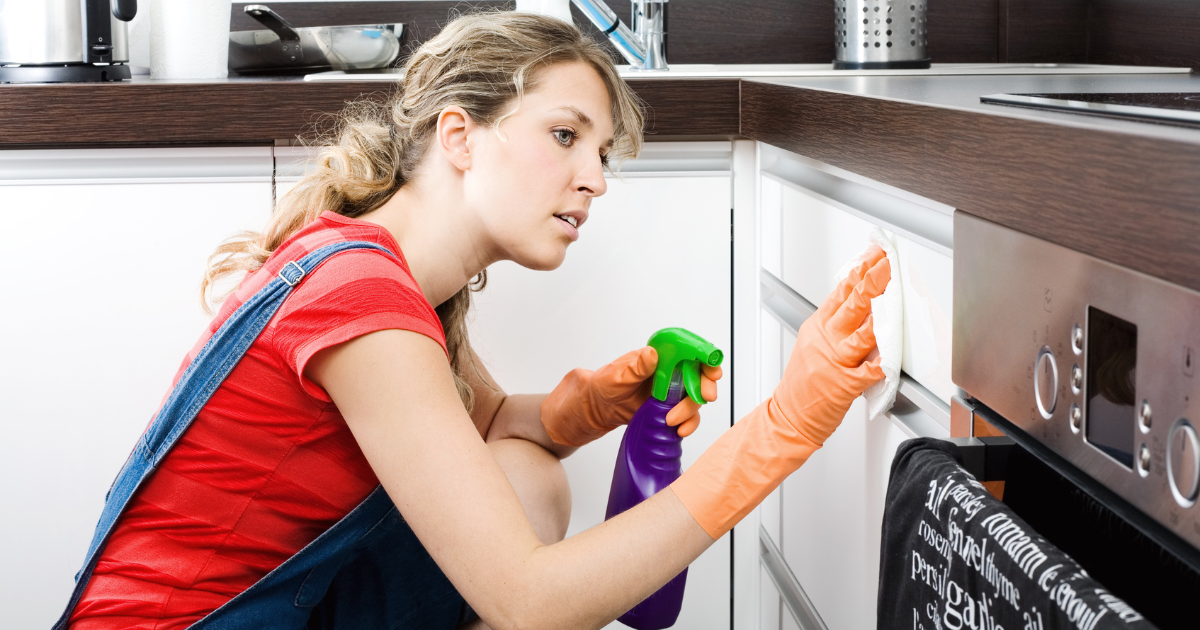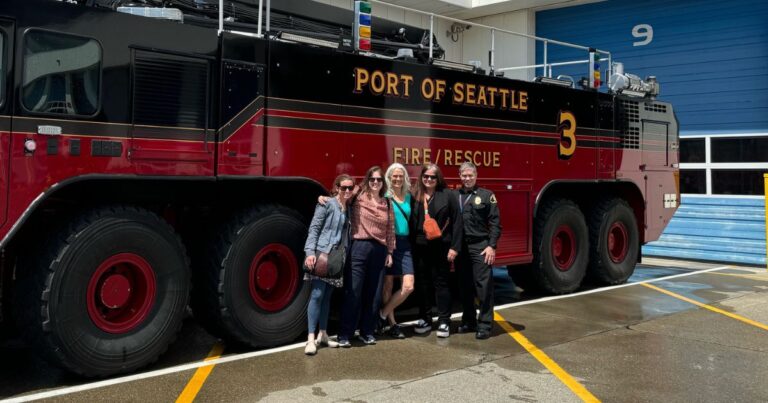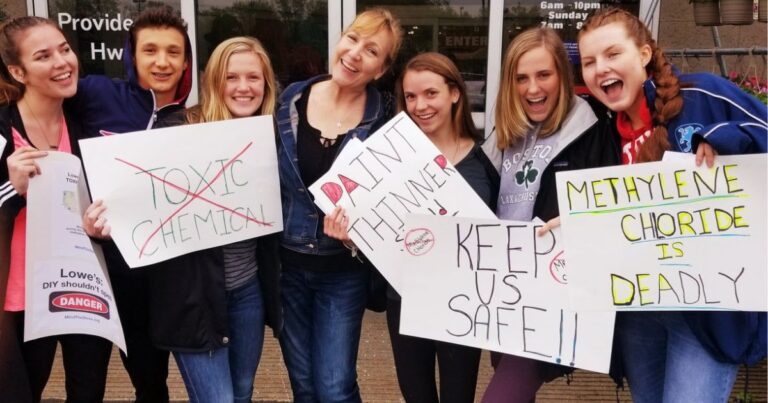Would you feed Lysol or Clorox disinfectant to your baby? Of course not…at least not intentionally.
Newly published research shows, however, that quats–the active chemicals in many household disinfectant cleaners–are frequently found in breast milk. A first-of-its-kind study by Toxic-Free Future, Indiana University, and Seattle Children’s Research Institute found quats in every sample from 48 breastfeeding women in and around Seattle, WA.
While mothers are exposed to quats (short for “quaternary ammonium compounds”) from numerous sources, the researchers found that the use of disinfecting products at home related to how much showed up in breast milk.
Some key findings include:
- Moms who reported use of quat-based disinfecting products at home had 30% higher levels of quats in their breast milk than those reporting use of products without quats or who did not disinfect at home.
- Moms in homes where disinfecting sprays were used had levels of quats in their breast milk almost twice as high as those who only used disinfecting wipes.
- Moms who disinfected at home more than once a week had slightly higher levels of quats in their breast milk than those who disinfected less often.
Since these samples were collected in 2019, before the COVID epidemic, it is highly likely that current exposure levels are even higher. We know from other recent research that exposure to quats from disinfection products skyrocketed during the epidemic as disinfecting activity drastically increased. For example, in one study, levels of certain disinfectant quats detected in blood during the pandemic were up to three times higher than in samples collected before the pandemic. So the results of this study of quats in breast milk are likely underestimating current exposures of breastfed infants.
It is also important to realize that we are all exposed to quats from sources often outside of our control. All the mothers in the study had quats in their breast milk, even those who reported that they did not disinfect at home. Quat disinfectants are commonly used in public spaces, schools, workplaces, and in the homes of others we visit, resulting in exposures that can show up in breast milk.
What do these results mean for our babies’ health?
Health impacts
These findings are of concern given links between exposure to quats and health effects including harm to the immune system, reproductive toxicity, and impacts on metabolism. Finding quats in breast milk means the moms’ babies were likely exposed during fetal development as well as during breastfeeding: two critical periods of development.
Despite these concerning findings, evidence shows that when possible, breastfeeding is healthiest for babies and moms. Breastfed babies have fewer infections and reduced risk of asthma, obesity, diabetes, and other health problems.
Safer alternatives make these exposures avoidable
Companies do not need to use quats in their products to create effective disinfectants; safer and effective alternatives are available, which means these exposures are entirely avoidable. For example,
What can YOU do?
- Rethink your cleaning and disinfecting habits
Broadly disinfecting at home does not make a home healthier or improve the health of people living there. Instead of disinfecting most surfaces regularly, focus on simple cleaning with soap and water instead. Use disinfectants sparingly for specific purposes and occasions when they are called for. Ensure that any disinfecting does not happen when children are present.
- If/when you do disinfect, choose an inherently safer product that does not contain quats
This study found lower levels of quats in the breast milk of moms who used non-quat containing disinfectants. Look for disinfectant products with safer active ingredients such as ethanol, hydrogen peroxide, and lactic acid.
- Stop using disinfectant sprays
Levels of quats in breast milk of moms who reported using disinfectant sprays were nearly twice the level of those using disinfecting wipes – indicating considerable exposure from sprays. This may be because sprays can linger in the air and be easily breathed in. It may also be because many disinfectant sprays contain higher concentrations of quats than you find in disinfecting wipes, so exposures can be higher.
- Stop using “convenient” disinfectant wipes
Remember that disinfectant wipes contain potent pesticide chemicals, and should only be used sparingly. Wipes are marketed as convenience items, but that means they’re often used in situations that actually just require cleaning or wiping and not disinfecting. Quat-based disinfectant wipes leave quat residue on surfaces, so you and other family members can be exposed after they’re used. A reusable microfiber cloth simply dampened with water can wipe your surfaces clean in most cases.
- Understand when to use disinfectants in your home
Disinfectants can play a useful role in keeping family members from spreading illnesses. If someone is actively sick with an infectious disease in your home, you may be able to help others in the home stay healthy by disinfecting surfaces or items the sick person has touched. Also, disinfecting at home may help some people who have compromised immune systems stay healthy.
- Share this information with friends, family, and coworkers
You can help reduce your family’s exposures to quats by changing your personal habits – but more people need to know about this problem so we can stop our exposure to toxic quat chemicals. Contamination of precious breast milk is simply unnecessary when safer, effective disinfectant alternatives are available.
- Tell companies and our government to take action!
We need corporate and government policies to protect us from toxic chemical exposures in everyday products—the public should not have to take on this enormous burden.
What can companies and our government do?
We can reduce exposures for everyone with policies and market actions that eliminate the use of quats and encourage use of safer substitutes. We need state, local, and federal policies banning these chemicals for any uses where safer alternatives are available. Retailers should only sell quat-free disinfectants and cleaners to the general public, since there are clear alternatives such as those certified by EPA’s Design for the Environment program. When customers demand action, companies take note.
Help make a difference and take action now by telling retailers nationwide to get toxic products off their store shelves!
Additional information and resources can be found in these resources from Women’s Voice for the Earth:
- Avoiding Quats and Finding Safer Alternatives
- How to Talk to Your Kid’s School About Safer Disinfectants
- Facts on Quats and Health Impacts
This story also appears on Women’s Voices for the Earth website.





